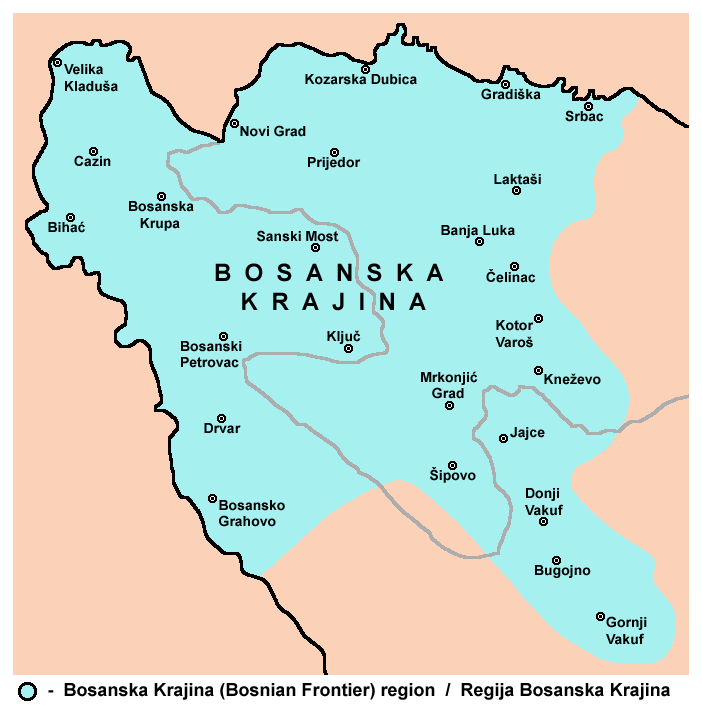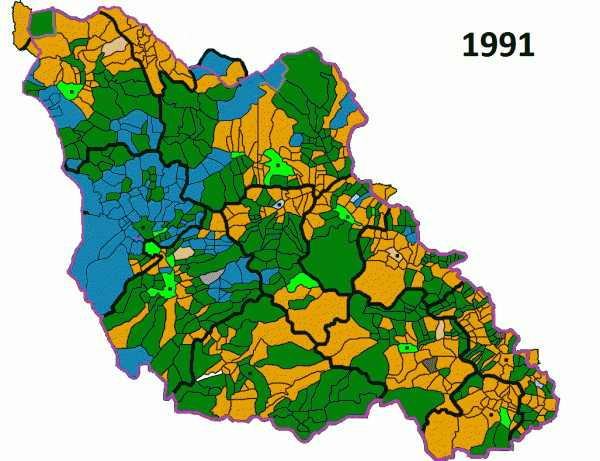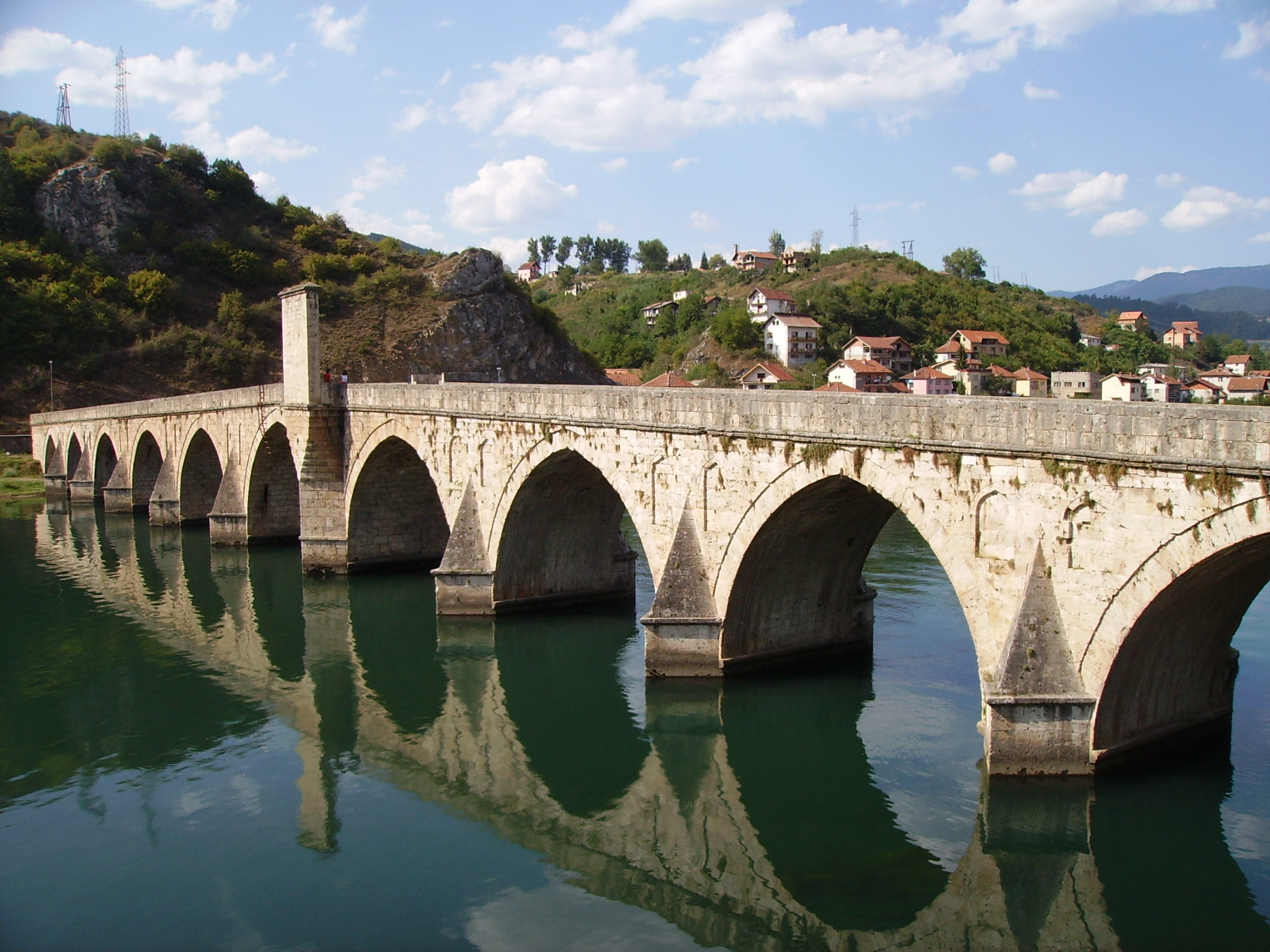|
Jajce
Jajce (Јајце) is a town and municipality located in the Central Bosnia Canton of the Federation of Bosnia and Herzegovina, an entity of Bosnia and Herzegovina. According to the 2013 census, the town has a population of 7,172 inhabitants, with 27,258 inhabitants in the municipality. It is situated in the region of Bosanska Krajina, on the crossroads between Banja Luka, Mrkonjić Grad and Donji Vakuf, on the confluence of the rivers Pliva and Vrbas. History Ancient times Jajce Mithraeum is a temple dedicated to the God of the Sun, Mithra. The god was worshiped and the cult spread to other parts of the Roman Empire throughout the Mediterranean basin by slaves and merchants from the Orient, and by Roman soldiers who came into contact with the followers of the cult in the East. The temple is dated to the 2nd century AD and was repaired sometime during the 4th century AD. This particular Mithraeum is renowned as one of the best preserved in Europe. It was discovered accidentally d ... [...More Info...] [...Related Items...] OR: [Wikipedia] [Google] [Baidu] |
Walled City Of Jajce
The Walled City of Jajce ( Bosnian, Croatian and Serbian: ''Jajačka tvrđava'', sr-Cyrl, Јајачка тврђава) is a medieval fortified nucleus of Jajce in Bosnia and Herzegovina, with Jajce Citadel high above town on top of pyramidal-shaped steep hill, enclosed with approximately long defensive walls,. It is one of the best preserved fortified capitals of the Bosnian Kingdom, the last stronghold before the kingdom dissolved under the pressure of military advancement at the onset of Ottoman Empire takeover. It is declared National Monument of Bosnia and Herzegovina, and, as the old Jajce city core, including the waterfall, and other individual sites outside the walled city perimeter, such as the Jajce Mithraeum, it is designated as ''The natural and architectural ensemble of Jajce'' and proposed as such for inscription into the UNESCO's World Heritage Site list. Geography The entire complex of the Walled city of Jajce, with the citadel, city ramparts, watchtower Medv ... [...More Info...] [...Related Items...] OR: [Wikipedia] [Google] [Baidu] |
Pliva Waterfall
The Pliva Waterfall ( sr-cyrl, Пливски водопад) is located by the town of Jajce, in central Bosnia and Herzegovina, where the river Pliva meets the river Vrbas. The waterfall is a large tufa, also known as travertine barrier, making over 22 meters cascade on the Pliva river, in a narrow karstic zone, which follows the Pliva course, retracted into a flysh and limestone contact zone. It was 30 meters high, but after an earthquake during the Bosnian war and attacks on the power plant further up the river, the area was flooded and now the waterfall is 22 meters high. The old Jajce walled city core, including the waterfall, and other individual sites outside the walled city perimeter, such as the Jajce Mithraeum, is designated as ''The natural and architectural ensemble of Jajce'' and proposed for inscription into the UNESCO's World Heritage Site list. The bid for inscription is currently placed on the UNESCO Tentative list. Scenery Image:River_Pliva_in_Jajce_Bosnia ... [...More Info...] [...Related Items...] OR: [Wikipedia] [Google] [Baidu] |
Kingdom Of Bosnia
The Kingdom of Bosnia ( sh, Kraljevina Bosna / Краљевина Босна), or Bosnian Kingdom (''Bosansko kraljevstvo'' / Босанско краљевство), was a medieval kingdom that lasted for nearly a century, from 1377 to 1463, and evolved out of the Banate of Bosnia, which itself lasted since at least 1154. Although Hungarian kings viewed Bosnia as under their sovereignty during this time, Bosnian sovereignty and independence in conducting its affairs is nevertheless undeniable. King Tvrtko I (r. 1353–91) acquired portions of western Serbia and most of the Adriatic coast south of the Neretva River. During the late part of his reign, Bosnia became one of the strongest states in the Balkan Peninsula. However, feudal fragmentation remained important in Bosnia and the Bosnian nobility held significant power, exercising it at the Stanak meetings where members deliberated on matters such as election of the new king or queen and coronations, foreign policy, sale o ... [...More Info...] [...Related Items...] OR: [Wikipedia] [Google] [Baidu] |
Hrvoje Vukčić Hrvatinić
Hrvoje Vukčić Hrvatinić (ca. 1350–1416) was a medieval Bosnian nobleman and magnate, Grand Duke of Bosnia, Knyaz of Donji Kraji, and Duke of Split. He was the most prominent member of the Hrvatinić noble family, and one of the major feudal lords in Kingdom of Bosnia. He was Grand Duke of Bosnia under three Bosnian kings: King Tvrtko I, King Stephen Dabiša and King Stephen Ostoja. In 1403 Ladislaus of Naples named him his deputy for Dalmatia, and bestowed him with a title ''Duke of Split'', later ''Herzog of Split''. He played a crucial role in the dynastic struggles between the Anjou and Luxembourg claimants to the Hungarian-Croatian throne at the end of the 14th century, as well as in the emergence of the Bosnian Kingdom as a regional power during the same period. Family Connections Hrvoje was the eldest son of Duke Vukac Hrvatinić. He had three brothers: Vuk (who was Ban of Croatia), Dragiša and Vojislav. He was married to Jelena Nelipčić,Sveučilište u Zagr ... [...More Info...] [...Related Items...] OR: [Wikipedia] [Google] [Baidu] |
Bosanska Krajina
Bosanska Krajina ( sr-cyrl, Босанска Крајина, ) is a geographical region, a subregion of Bosnia, in western Bosnia and Herzegovina. It is enclosed by a number of rivers, namely the Sava (north), Glina (northwest), Vrbanja and Vrbas (east and southeast, respectively). The region is also a historic, economic and cultural entity of Bosnia and Herzegovina, famous for its natural beauties and wildlife diversity. The largest city, and its historical center is Banja Luka. Other cities and towns include Bihać, Bosanska Krupa, Bosanski Petrovac, Bosansko Grahovo, Bužim, Cazin, Drvar, Gradiška, Ključ, Kostajnica, Kozarska Dubica, Laktaši, Mrkonjić Grad, Novi Grad, Prijedor, Sanski Most, Šipovo, Velika Kladuša. Bosanska Krajina is not a formal entity within the structure of Bosnia and Herzegovina; however it has a significant cultural and historical identity that was formed through several historic and economic events. The territory of Bosanska Krajina is curre ... [...More Info...] [...Related Items...] OR: [Wikipedia] [Google] [Baidu] |
Central Bosnia Canton
The Central Bosnia Canton ( bs, Srednjobosanski kanton/Средњобосански кантон, hr, Županija Središnja Bosna) is one of 10 cantons of the Federation of Bosnia and Herzegovina in Bosnia and Herzegovina. The most populous settlement in the region is Bugojno, followed by Travnik and Novi Travnik. Geography It is located in the center of the country, to the west of Sarajevo. The center of canton government is Travnik. Municipalities The canton is split into the municipalities of Bugojno, Busovača, Dobretići, Donji Vakuf, Fojnica, Gornji Vakuf-Uskoplje, Jajce, Kiseljak, Kreševo, Novi Travnik, Travnik, Vitez. The region reports a GDP equitable with the average of Bosnia and Herzegovina more broadly. The region has historically benefitted from agriculture and trade, as well as mineral deposits. The Central Bosnia Canton is the fifth largest of ten and its share of the national population is slightly below average. In April of 2022, the United Nations' Off ... [...More Info...] [...Related Items...] OR: [Wikipedia] [Google] [Baidu] |
List Of National Monuments Of Bosnia And Herzegovina
The National Monuments of Bosnia and Herzegovina include: * sites, places, immovable and movable heritage of historical and cultural importance, as designated by the Commission to preserve national monuments of Bosnia and Herzegovina on the basis of Annex 8 to the Dayton Agreement;''Official Gazette of the Federation of Bosnia and Herzegovina'' nos. 2/02, 27/02 and 6/04/ and * world heritage sites in accordance to the ''UNESCO World Heritage Convention''. Below is the comprehensive list composed of ''Cultural-Historical National Monuments of Bosnia and Herzegovina'' and '' World Heritage Sites in Bosnia and Herzegovina''. This list is based on the commission's old website now maintained as an archive, which contains comprehensive data-base with Decision list, Petition list, Provisional and Tentative list, maps, images, together with other documents, descriptions, criteria and laws of all country's monuments, candidate monuments, rejected monuments, as well as those removed from ... [...More Info...] [...Related Items...] OR: [Wikipedia] [Google] [Baidu] |
Komotin Castle
Komotin Castle is a ruined castle in Bosnia and Herzegovina, in the Jajce Municipality. Background Komotin is believed to have been built in the early 14th century. The last Bosnian King Stephen Tomašević issued a charter which gave Komotin to his uncle Radivoj Kotromanić. The architecture shows that komotin was a manorial court, but its positioning high on a hill that was difficult to access other than by narrow winding paths made it easily defendable. Once intruders and invaders had gotten up the path they then had a moat to contend with that could only be crossed by drawbridge A drawbridge or draw-bridge is a type of moveable bridge typically at the entrance to a castle or tower surrounded by a moat. In some forms of English, including American English, the word ''drawbridge'' commonly refers to all types of moveable .... The walls of the manor were between thick, with a rectangular shape. Within the walls was also a large and small bailey, plus quarters and accomm ... [...More Info...] [...Related Items...] OR: [Wikipedia] [Google] [Baidu] |
Josip Broz Tito
Josip Broz ( sh-Cyrl, Јосип Броз, ; 7 May 1892 – 4 May 1980), commonly known as Tito (; sh-Cyrl, Тито, links=no, ), was a Yugoslav communist revolutionary and statesman, serving in various positions from 1943 until his death in 1980. During World War II, he was the leader of the Yugoslav Partisans, often regarded as the most effective resistance movement in German-occupied Europe. He also served as the president of the Socialist Federal Republic of Yugoslavia from 14 January 1953 until his death on 4 May 1980. He was born to a Croat father and Slovene mother in the village of Kumrovec, Austria-Hungary (now in Croatia). Drafted into military service, he distinguished himself, becoming the youngest sergeant major in the Austro-Hungarian Army of that time. After being seriously wounded and captured by the Russians during World War I, he was sent to a work camp in the Ural Mountains. He participated in some events of the Russian Revolution in 1917 and the subs ... [...More Info...] [...Related Items...] OR: [Wikipedia] [Google] [Baidu] |
Municipalities Of Bosnia And Herzegovina
In Bosnia and Herzegovina, the smallest administrative unit is the municipality ("''opština''/општина" or "''općina''/опћина" in the official languages and scripts of the country). Prior to the 1992–95 Bosnian War there were 109 municipalities in what was then Socialist Republic of Bosnia and Herzegovina. Ten of these formed the area of the capital Sarajevo. After the war, the number of municipalities was increased to 143, grouped in the following way: *79 municipalities constitute the Federation of Bosnia and Herzegovina (FBiH), which comprises 51% of the country's total territory. The municipalities within the federation are grouped into ten cantons. *64 municipalities constitute the Republika Srpska (RS), which comprises 49% of the country's total territory. In addition, Brčko District does not belong to either entity and is governed as a condominium of both FBiH and RS entities. The district corresponds to the pre-war Brčko municipality. Although technica ... [...More Info...] [...Related Items...] OR: [Wikipedia] [Google] [Baidu] |
Mrkonjić Grad
Mrkonjić Grad ( sr-cyrl, Мркоњић Град, ) is a town and municipality located in the western part of Republika Srpska, an entity of Bosnia and Herzegovina. It is located in the region of Bosanska Krajina, between Banja Luka and Jajce. As of 2013, the municipality has a population of 16,671 inhabitants, while the town of Mrkonjić Grad has a population of 7,915 inhabitants. Name The town changed its name several times in history: Gornje Kloke, Novo Jajce, Varcarev Vakuf, Varcar Vakuf, and ultimately the present one. The last renaming took place in 1924 after King Peter I of Serbia, who had taken the ''nom de guerre'' "Mrkonjić" while fighting in the uprising (1875–78) against the Ottoman Empire. History From 1929 to 1941, Mrkonjić Grad was part of the Vrbas Banovina of the Kingdom of Yugoslavia. In World War II, the town became renowned by the first meeting of ZAVNOBiH on 25 November 1943, when Bosnia and Herzegovina was proclaimed as a common republic of Serbs, Croa ... [...More Info...] [...Related Items...] OR: [Wikipedia] [Google] [Baidu] |
Vrbas (river)
The Vrbas ( sr-cyrl, Врбас, ) is a major river with a length of , in western Bosnia and Herzegovina. It is a right tributary of the Sava river. The city of Banja Luka is located on the river banks. Etymology The word ''vrba'' means 'willow' in Serbo-Croatian, and a number of weeping willow trees adorn the river banks in Banja Luka. It lent its name to one of the provinces ( banovinas) of the Kingdom of Yugoslavia, the Vrbas Banovina. Tributaries The most important right tributaries are the Desna river, the Ugar, and the Vrbanja, and left: Prusačka river, Semešnica, the Pliva, the Crna Rijeka (Black River), and the Suturlija, which are located in the middle part of the basin. Geography It is a right tributary of the river Sava. The Vrbas river appears at the southern slope of the Vranica mountain near the town of Gornji Vakuf, at around above sea level and it drains central part of the northern slopes of the Dinaric mountain massif. It empties into the Sava river at aro ... [...More Info...] [...Related Items...] OR: [Wikipedia] [Google] [Baidu] |

.jpg)




